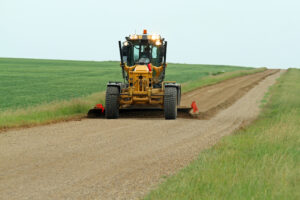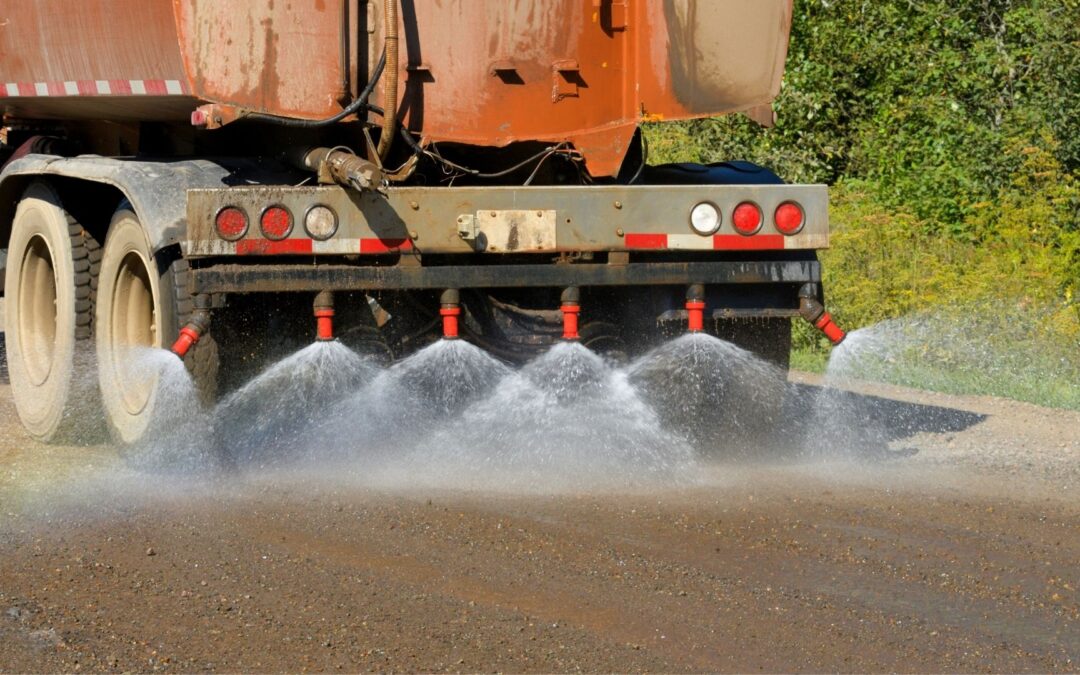Dust can be more than just a nuisance—it can threaten air quality, reduce visibility, and accelerate wear and tear on equipment and infrastructure. Whether you’re managing a construction site, unpaved road, or mining operation, implementing the right dust control strategies is essential for environmental safety, compliance, and operational efficiency.
In this guide, we’ll explore widely used dust suppression methods, compare their key features, and highlight considerations for selecting the right approach based on your specific site conditions.
Why Dust Control and Suppression Matter
Dust suppression is the practice of minimizing airborne dust particles through various treatments, especially in high-traffic, dry environments like gravel roads, work yards, and mining zones. Left uncontrolled, dust contributes to:
- Respiratory and environmental health risks
- Equipment corrosion and reduced visibility
- Regulatory noncompliance (especially near residential or protected areas)
Effective dust control helps reduce these risks and preserve both your infrastructure and the environment.
Pros and Cons of the Top Dust Control Methods
Below are the most common approaches to dust suppression, each with its own benefits and limitations:
- Water: Water remains one of the most commonly used dust control techniques due to its simplicity and low upfront cost. It works for short-term projects or temporary construction zones. However, its impact is fleeting—lasting only hours in dry, hot conditions. It’s also water-intensive, making it less suitable for drought-prone or sustainability-conscious operations.
- Calcium or magnesium chloride: Chloride salts are hygroscopic, meaning they absorb moisture from the air to keep road surfaces damp and reduce dust emissions. They’re often used on gravel roads and industrial sites. However, they can be corrosive to vehicles, pose environmental risks due to runoff, and may be restricted in eco-sensitive areas. Additionally, they don’t perform well in areas with low humidity or rainfall.
- Lignin sulfonate: Derived from wood processing byproducts, lignin sulfonates act as natural binders, helping soil particles stick together. They’re more sustainable than chloride salts and are biodegradable under most conditions. However, their effectiveness can diminish during heavy rainfall, and the treated surfaces may become slippery when wet or tacky in extreme heat.
- Synthetic polymers: These engineered products form a crust or seal over the surface of treated roads, effectively locking in dust. Synthetic polymers are durable and can last for months with minimal maintenance. Their drawback lies in cost and potential environmental concerns if the formulation is not biodegradable. They’re best suited for heavy-use areas like mining roads or construction staging zones where longevity is critical.
- BioBlend Epic DS: Made from biodegradable, plant-based ingredients, Epic DS effectively binds dust particles, stabilizes soil, and lasts many times longer than traditional water and salt-based products. It’s safe for people, animals, and surrounding ecosystems—making it ideal for dust control on gravel roads, rural communities, and environmentally regulated job sites. Unlike corrosive chemical suppressants, Epic DS is non-toxic, non-leaching, and supports sustainable land management.
Dust Suppression Methods Comparison Chart
| Dust Control Method | Best For | Longevity | Cost | Eco-Friendliness | Maintenance |
| Water | Short-term, low-traffic areas | Hours | Low | Neutral | High |
| Calcium/Magnesium Chloride | Industrial roads | Weeks | Moderate | Low | Medium |
| Lignin Sulfonate | Forestry, rural roads | Weeks | Moderate | Moderate | Medium |
| Synthetic Polymers | High-traffic, long-term | Months | High | Variable | Low |
| Epic DS | Multi-purpose, eco-sensitive sites | Months | Moderate | High | Low |
How to Apply Dust Suppression Products Effectively

To get the most from your dust suppressant, proper application is key:
- Prepare the surface: Remove large debris and grade it to have a roughly 3% slope. A loose surface allows the suppressant to better penetrate and cover the area.
- Apply in dry conditions: Avoid applying before rain. Dry weather ensures maximum adhesion and effectiveness.
- Use the right equipment: While many dust suppressants can be used in standard water trucks or sprayers, you may need to modify the nozzles or flow rates to get the ideal coverage.
- Follow-up for maintenance: High-traffic areas and areas that show premature wear will need to be spot-treated more often to extend its overall life expectancy.
Why Choose Epic DS for Dust Control on Gravel Roads
Gravel roads are particularly prone to dust issues due to loose aggregate and frequent vehicle traffic. Epic DS is engineered specifically for these conditions:
- Forms a strong, natural bind to trap particles
- Penetrates deep into gravel for longer performance
- Doesn’t leach into surrounding soils and waterways
- Non-corrosive—safe for equipment and vehicles
As a plant-based dust suppressant, Epic DS provides a balance between performance and environmental responsibility—making it ideal for municipalities, construction companies, and environmentally conscious operators.
Frequently Asked Questions
What is the best dust control for roads?
The best dust control solution depends on your specific needs—climate, traffic volume, budget, and environmental sensitivity. For temporary relief, water spraying works but requires frequent reapplication and is a finite resource in many regions.
For longer-lasting results, chloride-based treatments are common but come with environmental drawbacks. Epic DS stands out as a top choice for those seeking road dust control products that are biodegradable, non-corrosive, non-toxic, and effective over extended periods.
What chemicals are used for dust control?
Traditional dust control chemicals include:
- Calcium chloride and magnesium chloride: Hygroscopic salts that pull moisture from the air.
- Lignin sulfonate: A wood byproduct that binds particles.
- Petroleum-based emulsions: Used in some industrial applications, but are environmentally risky.
- Synthetic polymers: Form durable bonds but may include synthetic ingredients.
In contrast, BioBlend’s Epic DS uses plant-based materials, offering a chemical-free, biodegradable alternative for environmentally conscious operations.
How long do dust suppressants last?
The lifespan of a dust suppressant varies based on product type, weather, and traffic. Here’s a general range:
- Water: Hours
- Chloride salts: 1–3 weeks, depending on humidity and moisture
- Lignin sulfonates: Several weeks
- Synthetic polymers: 1–3 months
- Epic DS: Several months or more, especially when properly applied and maintained
What kind of oil is used for dust control?
Some older or industrial dust control methods use petroleum-based oils like asphalt emulsions or waste oils. However, these pose serious risks to soil and groundwater and are increasingly regulated or banned in many regions.
Modern, eco-friendly alternatives like Epic DS use non-toxic, plant-derived components—offering oil-like performance without harmful side effects. This makes it a safe and sustainable option for controlling dust on gravel roads, parking lots, and unpaved surfaces.

